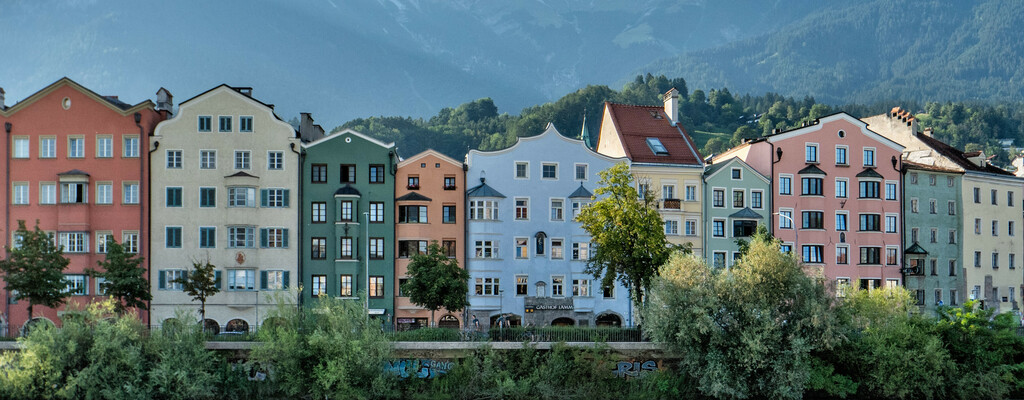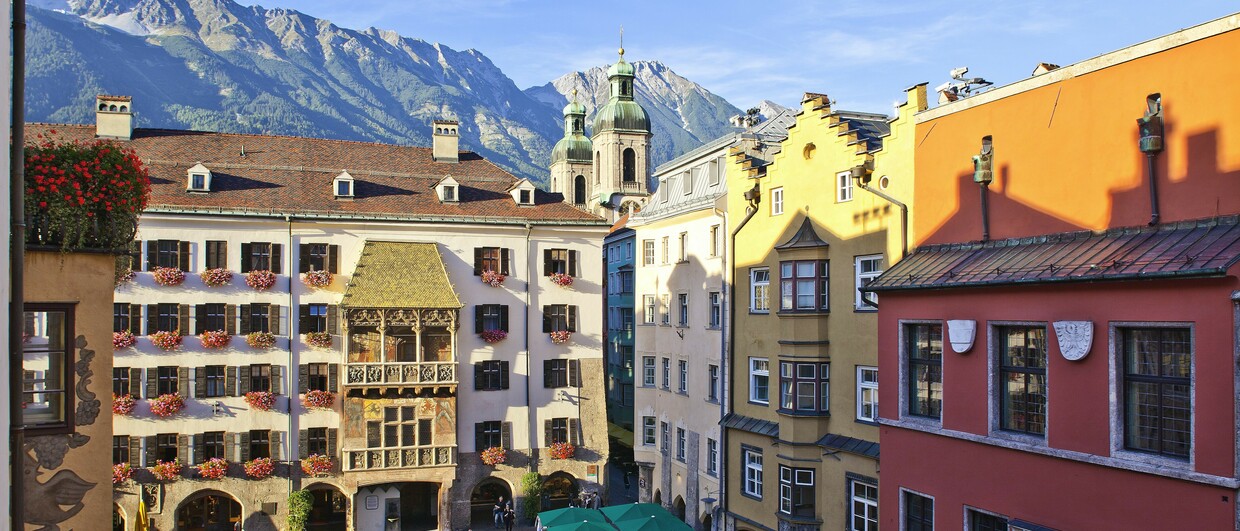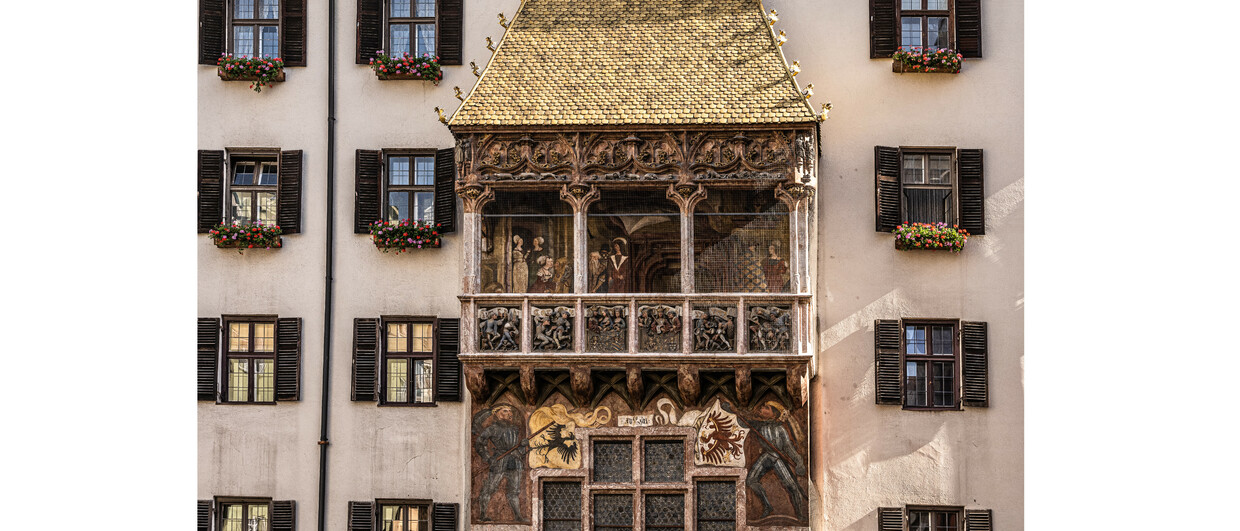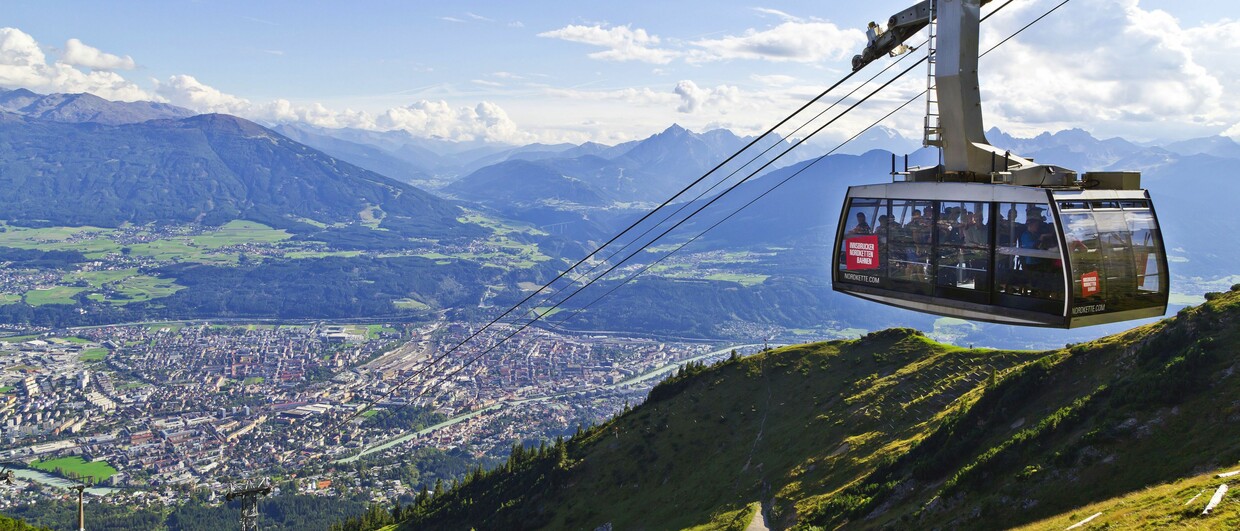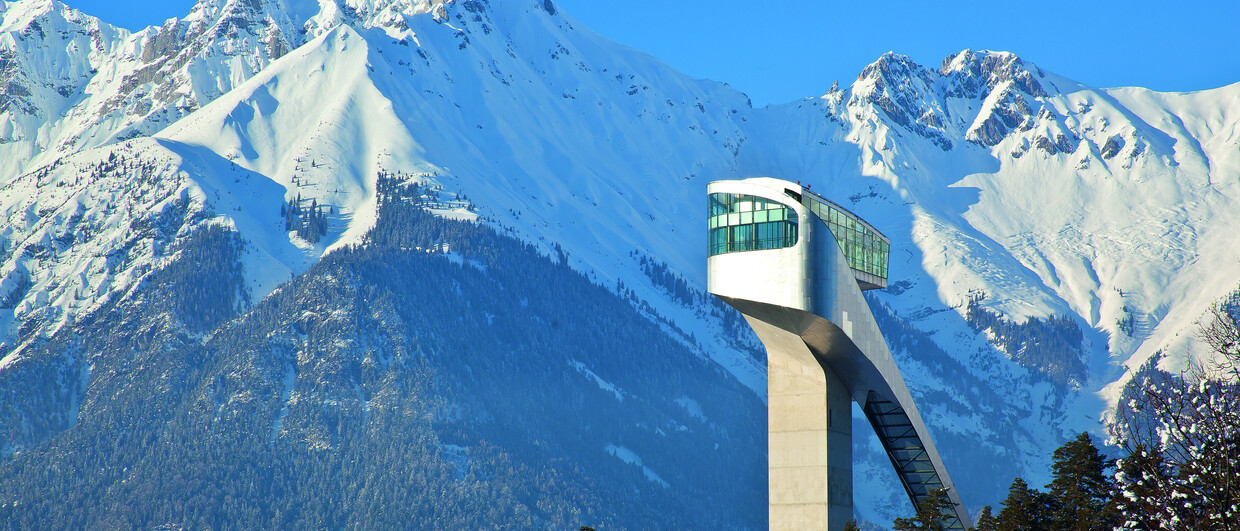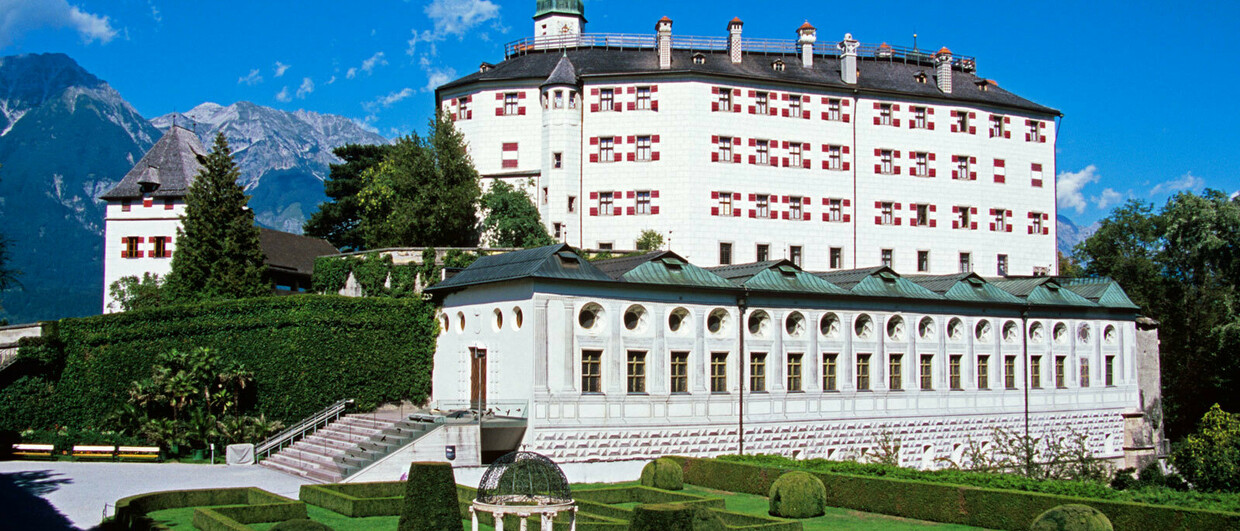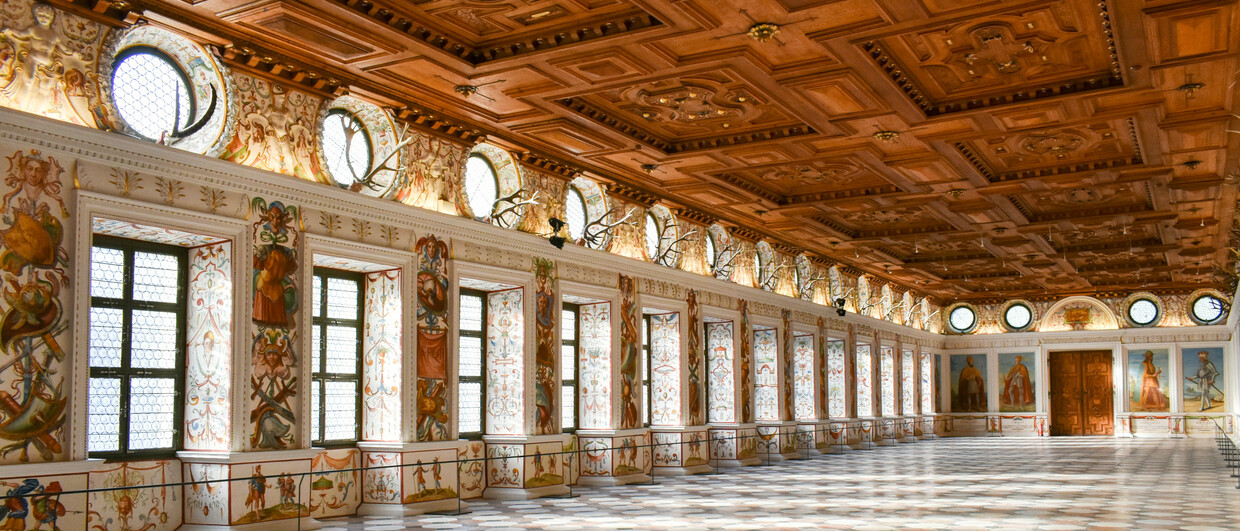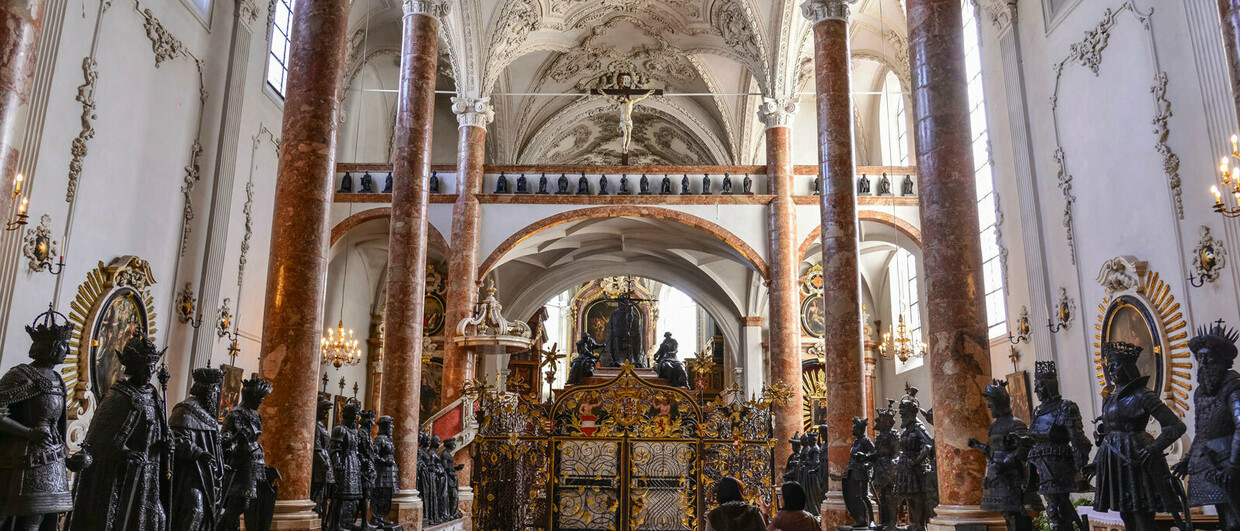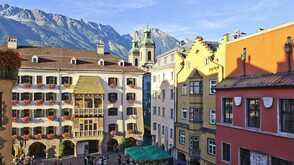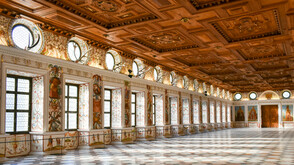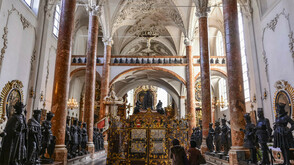Most wanted: these five sights in Innsbruck simply have to be seen
Verena Abenthung, Austria Guide and blogger for Innsbruck Tourismus, knows the city like the back of her hand. She guides interested visitors on the popular city walks through the old town, cheerfully offering them her historical knowledge. Verena reveals why no one should miss the following five sights. One top tip even before you start: these and many other attractions are included in the Innsbruck Card.
1. The Golden Roof: the gleaming boast built by Emperor Maximilian I
Verena explains: “With the Golden Roof, Maximilian I aimed to create a monument to himself”. In this he succeeded as, while the “Dachl” consists of 2,657 copper shingles, they are also fire-gilded. “You can actually see real gold,” she states. In addition, the Emperor had his monument richly decorated with frescoes and reliefs. The original reliefs, made of delicate sandstone, can be seen in the adjoining museum – in true close-up, making a visit to the museum worthwhile for this reason alone, according to Verena. She recounts a curious story about the Roof’s loggia: “The museum’s premises had been rented out as accommodation until the 1960s. According to the rental contract, the loggia could be used freely – it simply had to be kept clean.” Today it is a protected monument and may no longer be visited. It is still however possible to gain a good view of the loggia thanks to the mirrors cleverly placed in the museum.
2. The Nordkettenbahnen cable railways: zooming up from the city to the high Alpine peaks
According to Verena, the impressive mountain scenery of the Nordkette range is often Innsbruck’s greatest attraction: “Visitors are surprised at how incredibly close the mountains are and how easily they can be reached via the Nordkettenbahnen cable railways” she says. In her view, the station buildings, created by Zaha Hadid in 2007, are among Innsbruck’s finest testimonies to modern architecture. She describes the ascent as a journey into the history of Alpine architecture, as the cable car station buildings on the mountain are the originals dating from 1928. “As you reach the Seegrube station, the Alpine feeling begins”, according to Verena. She nevertheless recommends continuing right to the top – to the “Top of Innsbruck” at an altitude of over 2,300 metres: “The views of the city and towards the south are only beaten by the views towards the north and to the Karwendel mountains, the home of Austria’s largest and oldest nature park”, she enthuses. Verena advises families and animal lovers also to visit the Alpine Zoo, a special stop on the Hungerburgbahn funicular.
3. The Bergisel ski jump: THE Innsbruck landmark for sports and architecture fans
Verena is convinced that Zaha Hadid placed a real eye-catcher on the Bergisel hill when she redesigned the ski jump there in 2002. The snake-like architecture has led to it being nicknamed the “cobra” and “snake’s head”. At the same time, it is a symbol of Innsbruck as a city of sports: ski jumping competitions have been held up on the Bergisel since 1927, while the famous Four Hills Tournament has been held there for decades and the Olympic flame has been lit there three times. In summer, when the weather is good, bold “show jumpers” demonstrate their skills to viewers each day. “The view from the top is notorious, as jumpers look directly onto a cemetery from up there” she explains. If you have more time, she recommends a visit to the Tirol Panorama nearby, where you can see the giant circular painting illustrating the famous battles of the Tyrolean struggle for freedom in 1809. Verena also suggests a trip to the transparent viewing platform known as the “Drachenfelsen” on the Bergisel circular hiking trail, which in good weather offers fantastic views of the idyllic Sill Gorge.
4. The Court Church: a final resting place?
From the outside, the Court Church appears plain and simple – but that is what prompts Verena’s enthusiasm for the interior: “The Court Church is full of treasures and monuments”, she says, mentioning the Ebert organ, a rare Renaissance instrument that can still be played. The most valuable historical artwork there, however, is the funerary monument of Emperor Maximilian I, which consists of an ornate tomb guarded by 28 larger-than-life bronze figures. The city guide explains: “The creation of the tomb, by the best artists of the time, took an incredible 82 years and is a masterpiece of the High Renaissance”. Yet it lies famously empty as – in accordance with the Emperor’s last wish, expressed on his deathbed – he was buried in his native city of Wiener Neustadt. “It is an absurd situation”, believes Verena. On the other hand, a number of famous Tyrolean freedom fighters, including Andreas Hofer, as well as representatives of the nobility, such as Archduke Ferdinand II and his bourgeois wife Philippine Welser, have found a final resting place in the Court Church. Not to be missed is the multimedia show that can be seen in the rooms belonging to the cloister. A frequent visitor, she says: “You effectively travel back to the time of Maximilian and you’re thus perfectly prepared for the visit to the church”.
5. Ambras Castle: a fairytale castle containing historic artistic rarities
Archduke Ferdinand II had an entire palace built for his wife Philippine Welser. “Philippine is still remembered on account of her bath, a kitchen herb garden that she planted and her cookbook”, Verena explains. As Ferdinand was a passionate collector, the palace contains extensive armouries, cabinets of artworks and curiosities. Its collections are regarded as the oldest museum in the area known as Mitteleuropa, and contain all kinds of rarities: as a connoisseur, Verena for example points out a portrait of “Dracula” or the “Tödlein”, an extremely delicately carved wooden skeleton in an unusual pose. Another must-see is the “Spanish Hall” with its richly coloured paintings and impressive wooden ceiling, which for Verena is the highlight of the castle. She also recommends a walk round the castle gardens before or after visiting the castle: “The peacocks – some of them white – that are free to roam around are simply part of the Ambras Castle experience”.
Don’t forget – yet more tips and ideas from Verena can be found on the #myInnsbruck-Blog.
Innsbruck Card: save and experience to the max!
Innsbruck’s “most wanted sights” are particularly easy to discover with the Innsbruck Card. Valid for 24, 48 or 72 hours, the Card includes admission to a total of 22 attractions and museums. And it offers free mobility, with the City of Innsbruck’s public transport services (IVB), the Hop-on Hop-off Bus Sightseer Innsbruck and three hours of bike rental all included. Also part of the offer is one return trip on both the Nordkettenbahnen cable railways and the Patscherkofel cable cars.
For all information see www.innsbruck.info/innsbruckcard.

